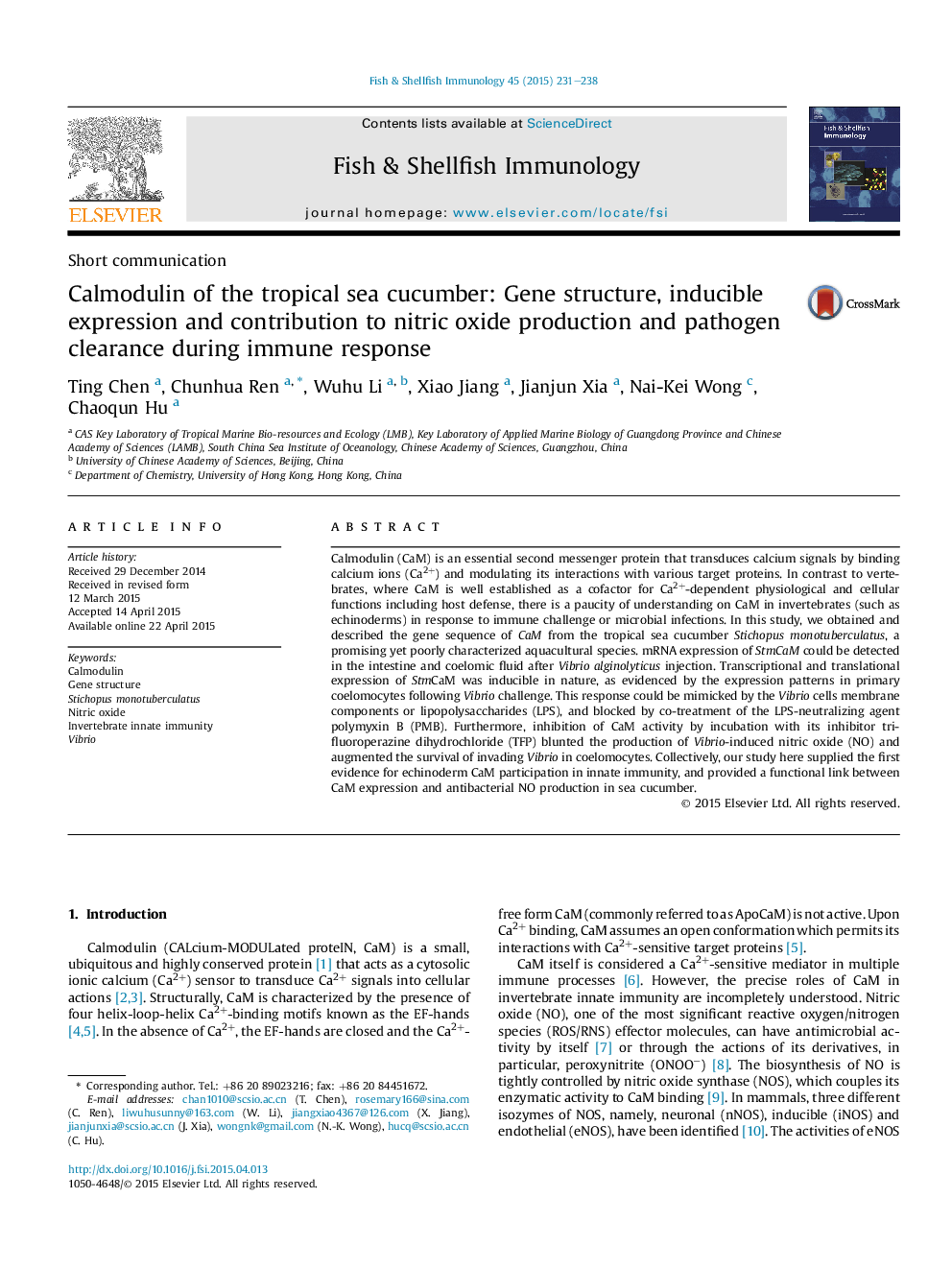| Article ID | Journal | Published Year | Pages | File Type |
|---|---|---|---|---|
| 10971871 | Fish & Shellfish Immunology | 2015 | 8 Pages |
Abstract
Calmodulin (CaM) is an essential second messenger protein that transduces calcium signals by binding calcium ions (Ca2+) and modulating its interactions with various target proteins. In contrast to vertebrates, where CaM is well established as a cofactor for Ca2+-dependent physiological and cellular functions including host defense, there is a paucity of understanding on CaM in invertebrates (such as echinoderms) in response to immune challenge or microbial infections. In this study, we obtained and described the gene sequence of CaM from the tropical sea cucumber Stichopus monotuberculatus, a promising yet poorly characterized aquacultural species. mRNA expression of StmCaM could be detected in the intestine and coelomic fluid after Vibrio alginolyticus injection. Transcriptional and translational expression of StmCaM was inducible in nature, as evidenced by the expression patterns in primary coelomocytes following Vibrio challenge. This response could be mimicked by the Vibrio cells membrane components or lipopolysaccharides (LPS), and blocked by co-treatment of the LPS-neutralizing agent polymyxin B (PMB). Furthermore, inhibition of CaM activity by incubation with its inhibitor trifluoroperazine dihydrochloride (TFP) blunted the production of Vibrio-induced nitric oxide (NO) and augmented the survival of invading Vibrio in coelomocytes. Collectively, our study here supplied the first evidence for echinoderm CaM participation in innate immunity, and provided a functional link between CaM expression and antibacterial NO production in sea cucumber.
Related Topics
Life Sciences
Agricultural and Biological Sciences
Aquatic Science
Authors
Ting Chen, Chunhua Ren, Wuhu Li, Xiao Jiang, Jianjun Xia, Nai-Kei Wong, Chaoqun Hu,
